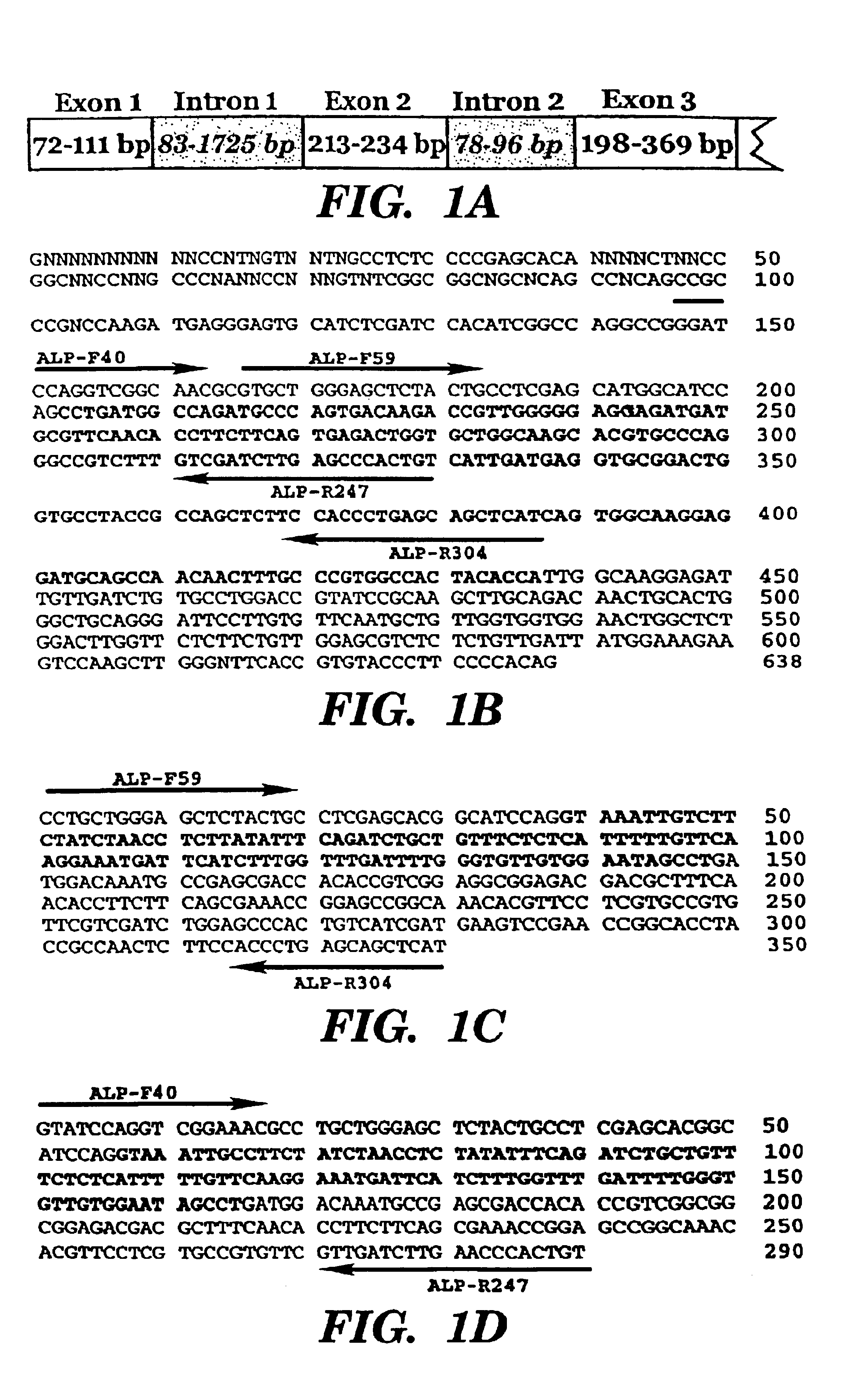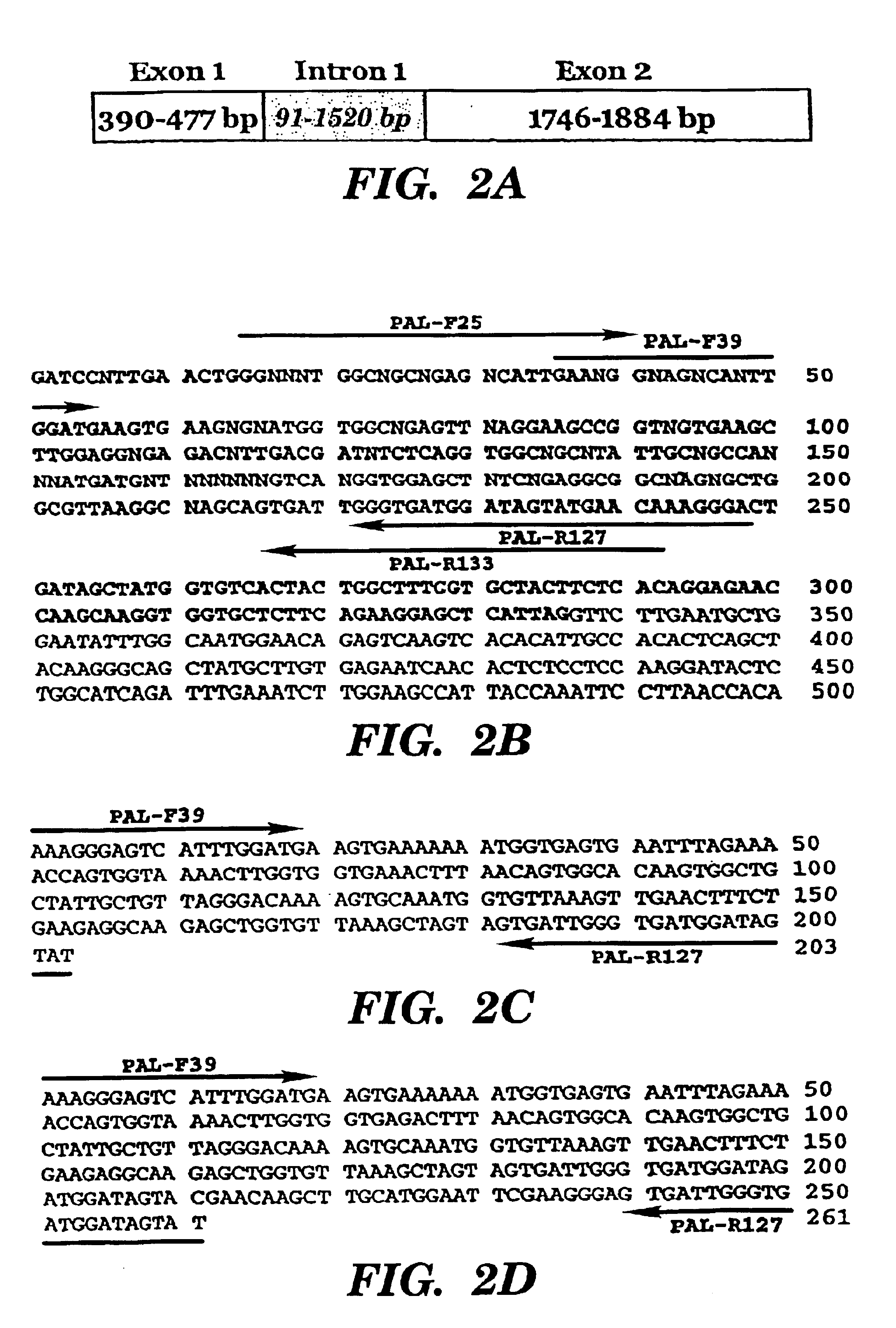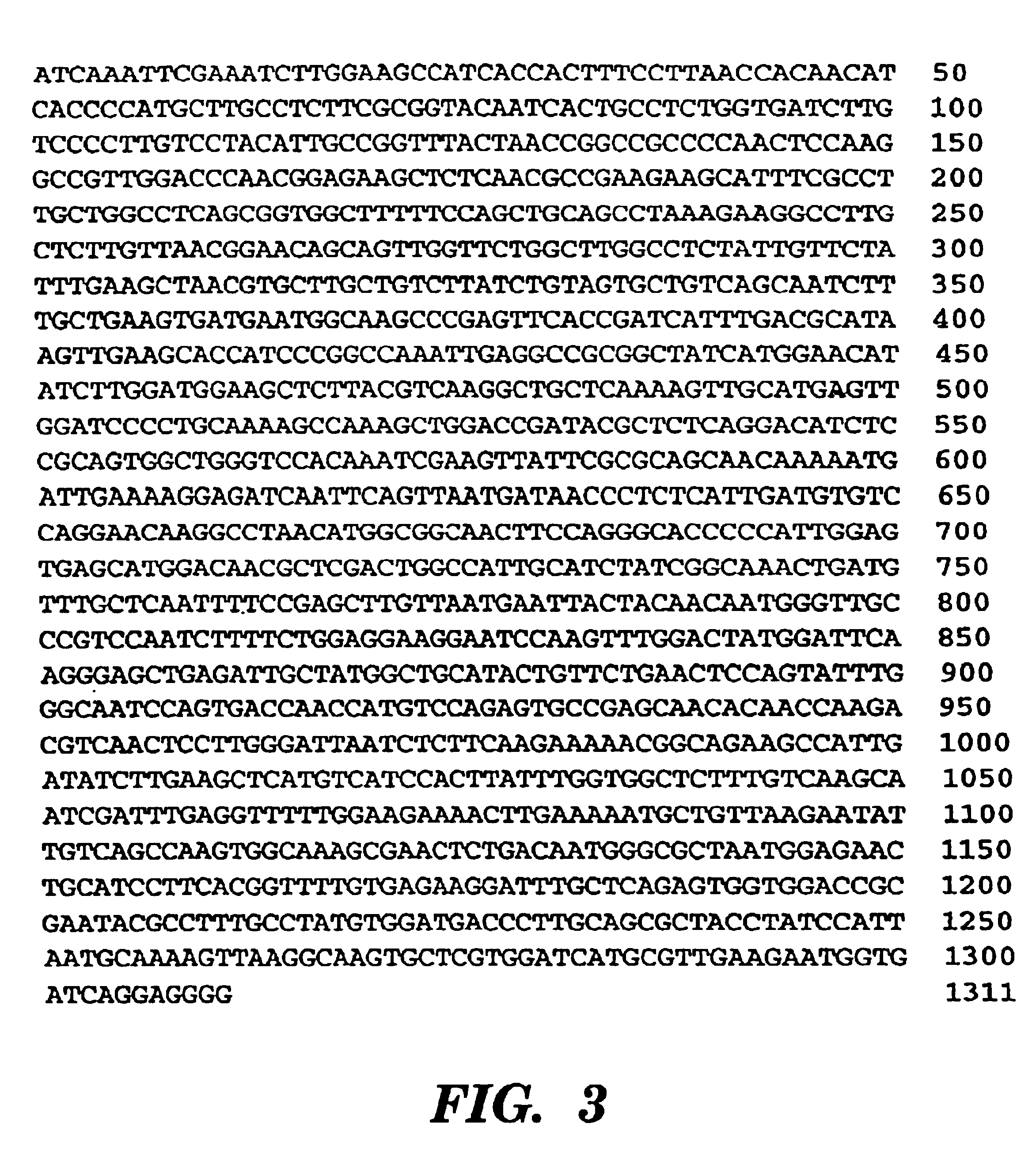Constitutive α-Tubulin promoter from coffee plants and uses thereof
a technology of -tubulin and promoter, which is applied in the field of identification and isolation of dna promoters from coffee plants, can solve the problems of low seed price for farmers, increased threats, and inability to adapt to pests, and achieves low gene diversity, low production cost for farmers, and lack of resistance.
- Summary
- Abstract
- Description
- Claims
- Application Information
AI Technical Summary
Benefits of technology
Problems solved by technology
Method used
Image
Examples
example 1
Genoinic Miniprep DNA Extraction
[0113]For DNA minipreparations (Cheung et al., “A Simple and Rapid DNA Microextraction Method for Plant, Animal and Insect Suitable for RAPD and Other PCR Analyses,”PCR Methods and Applications 3:69-70 (1993), which is hereby incorporated by reference in its entirety) coffee and tobacco seeds were germinated in soil, and approximately 25 mg of leaf tissue was immersed in 160 μl of extraction buffer (200 mM Tris-HCl pH 8.0, 70 mM EDTA, 2M NaCl, 20 mM sodium metabisulfate, 2% hexadecyltrimethyl ammonium bromide (CTAB), and 0.2% β-mercaptoethanol). The tissue was ground with an electric-driven Kontes pestle for about 30 seconds and 40 μl of 5% Sarkosyl was added. The lysate was incubated for 1 hour at 60° C. and centrifuged at room temperature for 15 minutes at 16,000 g to remove cell debris. The supernatant was transferred to a clean tube, and DNA was precipitated by the addition of 90 μl of 10 mM ammonium acetate and 200 μl of isopropanol, incubated at...
example 2
Genonic DNA Maxiprep Extraction
[0114]For DNA maxipreparations, the protocol from Bernatzky et al., “Toward a Saturated Linkage Map in tomato Based on Isozymes and Random cDNA Sequences,”Genetics 112: 887-898 (1986), which is hereby incorporated by reference in its entirety, was slightly modified as follows: coffee or tobacco leaves from greenhouse plants (7-10 g) were collected, washed with tap water, and after that, immersed and blended for 1-2 minutes in 150 ml of DNA extraction buffer (63.77 g sorbitol, 12.1 g Trizma base, 1.86 EDTA-Na2, 0.2% β-mercaptoethanol, pH 8.2, made up to 1 liter with water; 0.19 g sodium bisulfite was added just before use). The resulting mixture was filtered through a layer of miracloth and two layers of cheesecloth into 250 ml plastic bottles kept on ice. After centrifugation at 4° C. for 15 minutes at 650 g, the supernatant was discarded and the pellet resuspended in 5 ml of DNA extraction buffer to be transferred to a 50 ml Falcon tube containing 2 m...
example 3
Genomic DNA Restriction Digestion
[0115]For genomic DNA restriction digestion, 10-15 μg of genomic DNA was incubated with 100 U of the restriction enzyme and 5 μl of buffer, in a final reaction volume of 50 μl, at 37° C., overnight. The reaction was loaded in a 0.8% agarose gel and run at 25 volts for several hours.
PUM
| Property | Measurement | Unit |
|---|---|---|
| altitudes | aaaaa | aaaaa |
| altitudes | aaaaa | aaaaa |
| diameter | aaaaa | aaaaa |
Abstract
Description
Claims
Application Information
 Login to View More
Login to View More - R&D
- Intellectual Property
- Life Sciences
- Materials
- Tech Scout
- Unparalleled Data Quality
- Higher Quality Content
- 60% Fewer Hallucinations
Browse by: Latest US Patents, China's latest patents, Technical Efficacy Thesaurus, Application Domain, Technology Topic, Popular Technical Reports.
© 2025 PatSnap. All rights reserved.Legal|Privacy policy|Modern Slavery Act Transparency Statement|Sitemap|About US| Contact US: help@patsnap.com



